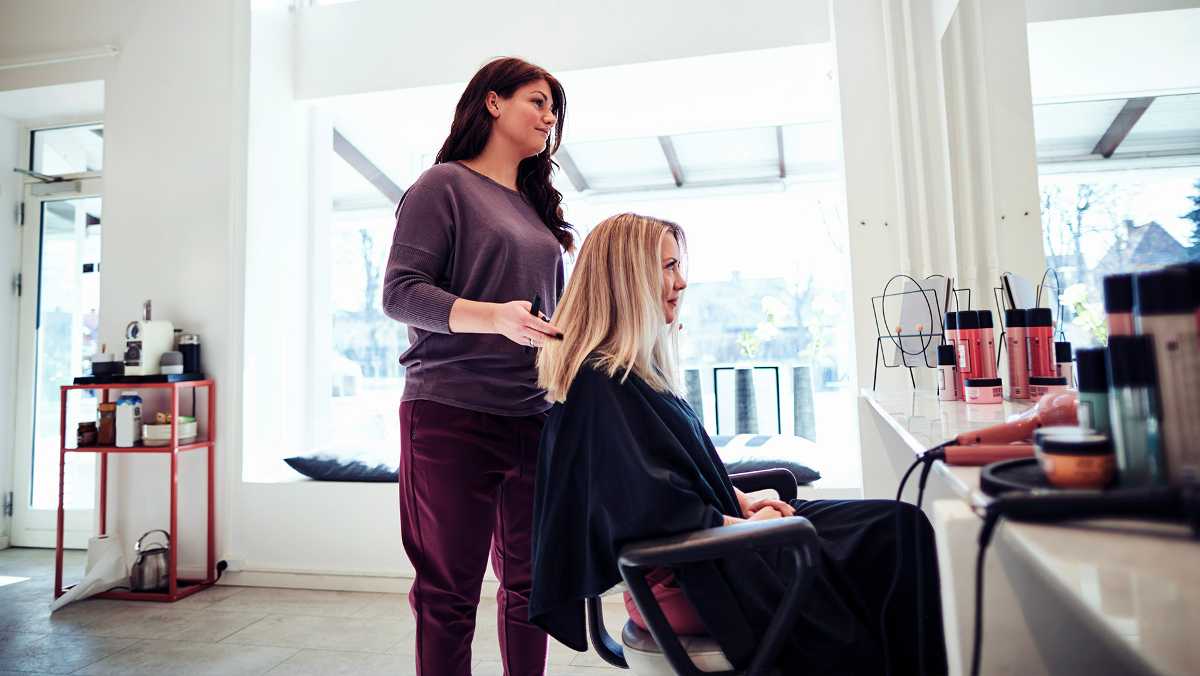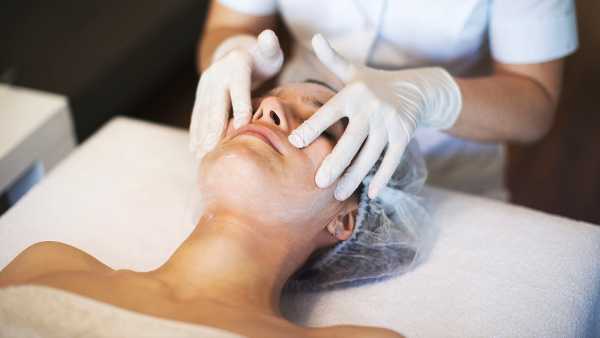Starting your own business as a hairdresser or barber

- Henk Herkink
- How to
- 27 May 2020
- Edited 20 November 2025
- 6 min
- Starting
When you open a hair salon or barbershop, there are lots of things to take into account. For example, the rules for running a hair salon from your home, or visiting clients in their home. And how do you find clients and what should your prices be? Read here how to make a successful start as a hairdresser or barber.
What do you need to do and arrange when starting a business?
Find out with the 'Personal to-do list' on Business.gov.nl. Answer the questions and see the steps that are important in your situation.
These are the key considerations when you start as a self-employed hairdresser or barber:
Market research and finding customers
The number of hairdressers has been growing for years. On 1 January 2025, there were 34,062 barbers registered with KVK. The number of barbershops has also grown, from 620 in 2021 to 1,170 in 2025.
So you need to make a plan to attract customers who are spoiled for choice. You could become a specialist, for example, in styling children's hair, doing perms, or dyeing. Or stand out by using sustainable products.
A barbershop caters specifically to men. Customers come to the barbershop not only to get a haircut and a shave, but also for the experience. A barbershop is all about craftsmanship, atmosphere, and personal service. Often barbershops also offer traditional shaves. If you want to open a barbershop, it is advisable to take special training for this. You will learn to cut, style, and care for men's hair and facial hair.
Use the KVK Company Counter to find out how many competitors are active in your region.
Number of hairdressers in the Netherlands (2021-2025)
| Year | No. of hairdressers on 01-01 |
|---|---|
| 2021 | 31,213 |
| 2022 | 32,199 |
| 2023 | 32,869 |
| 2024 | 33,544 |
| 2025 | 34,062 |
| Source: KVK Business Register |
Rates
How much will you charge your customers for a haircut, styling, or colouring? Hairdressers and barbers charge set rates for treatments. When you set your rates, take into account:
- Fixed costs, for example rent and insurances.
- Variable costs such as the products you use.
- Profit, how much money do you want to earn per treatment? Calculate how much time treatments take on average.
- Taxes, make sure you have enough money left to pay income tax and VAT.
Have you done specialised training, and are you a specialist in a certain area? Then you can charge extra for the treatments you offer.
Location
Choose where you want to work. For example:
A home hair salon or barbershop
Many newly established hair stylists start their business by working out of their home. Often, you do not need to make too many changes. Or you convert your garage into a work space. The benefits of running your business at home are that you eliminate travel time, travel expenses, and additional rent. A potential disadvantage is that it becomes harder to separate work from your private life.
Check the conditions
Before you start, check the rules with your local authority. Do you have to notify the municipality of your plans to open a business? Does your business fit with the local environment ? What do you need to look out for when remodelling your home? And are you allowed to put up a sign outside your home?
It is also important to check your mortgage agreement or lease to see if you are allowed to start a business from or near your home. Contact your bank or landlord to discuss your plans. Also remember your insurance policies. Building insurance and property insurance cover your personal property and the home itself. They do not protect you from damage to your business assets and workspace.
Providing services for clients in their homes
Some hairdressers and barbers go to their clients for an appointment. This way, you can get started easily and quickly. Just make sure you have business liability . Do you accidentally cause damage at a customer's home? Then you will not have to pay for it yourself. Also include your travel expenses in your rate.
Renting or buying business premises
Are you looking to rent or buy business premises? Then think carefully about your requirements and wishes first. For example, does the property fit with the image of your business? And what the costs of the property will mean for the rates you charge your customers. If you opt for a sustainable property with energy label A or B, you will save on energy costs. Take a look at the environment . It will tell you whether you are allowed to start a hair salon or barbershop in the property you want.
KVK's Location Scan (in Dutch) has information about the people who live in the neighbourhood, such as their income and age. This will help you decide whether the location is a good fit for your business.
Renting a chair
Chair rental involves a collaboration between 2 or more independent entrepreneurs who offer their services to customers at their own risk and expense from the same commercial premises. This approach is becoming increasingly popular. Chair rental can be a practical way to reduce your accommodation costs, buying costs, and marketing expenses. It also gives you the chance to expand your services, for example, by working with beauty therapists and nail stylists.
Taxes
If the Netherlands Tax Administration (Belastingdienst) considers you a business owner for VAT purposes, you must file a VAT return every quarter. This involves reporting the VAT you have charged to customers or clients and deducting the VAT you have paid to your suppliers. The VAT rate for hairdresser services and products is 9%. For other products, such as shampoo or hair brushes for example, the VAT rate is 21%. You will also need to file an income tax once a year.
Rules and laws
As a hairdresser or barber, you will need to keep in mind the following main rules and laws:
Music in your salon
Do you play music in your hair salon or barbershop? Then you need a licence (permission) for music . You can find the costs and conditions at from BumaStemra and Sena (category: Care).
Opening hours
The Trading Hours (Winkeltijdenwet) states that your salon can be open Mondays to Saturdays from 6:00 to 22:00. If you want to open outside these hours, you have to ask your municipality for a permit.
Sustainability
The number of rules and laws about sustainability is growing. You need to take these into account when, for example, you set up your premises. Read how you can make your business (more) sustainable, and save yourself time, effort, and money later on.
Ban on microplastics
Besides rules for you and your salon, there are rules for the products you use. For example, since 17 October 2023, you cannot sell beauty products containing microbeads. From 2027, shampoos must also not contain other forms of microplastics. Keep this in mind when you buy stock.
Safe and healthy working
The impact of unsafe or unhealthy working conditions can be serious, including occupational hand eczema (OHE) or back pains. The ‘healthy hairdresser’ (in Dutch) initiative, set up by the sector association Branche Platform Kappers (in Dutch) will help you identify risks within your business. And give you tips on how to act on these risks.
Mandatory pension scheme for staff
Are you hiring staff? Then you must join the pension scheme for (in Dutch). Usually, you also have to join the Social Fund for . (in Dutch). This organisation provides training and development.
KVK Insurance check
While some insurance policies are mandatory, others are simply practical and convenient. Which ones do you need? The KVK Insurance Check helps you choose your insurance products.
Sector organisation ANKO
Sector organisation ANKO (in Dutch) represents the interests of Dutch hairdressers and barbers. You do not have to become a member, but if you do, you can turn to ANKO for information about the sector.
You do not need any specific qualifications to work as a hairdresser or barber, but training is essential. You have to learn techniques for cutting, dyeing, and other treatments such as perms. Training enables you to offer your customers the quality they expect. ANKO organises training and retraining courses. Keep up with new developments in your field. It increases your chances of success.
General information for starters
Apart from all the above, new business owners will also have to deal with the following:
- Checklist for starting a business in the
- Small Businesses Scheme (KOR)
- Part-time business
- Hiring staff for the first time
Do you have any questions about starting your own hair salon? Ask the KVK Advice Team advisers to help you: 088 585 22 22.


